

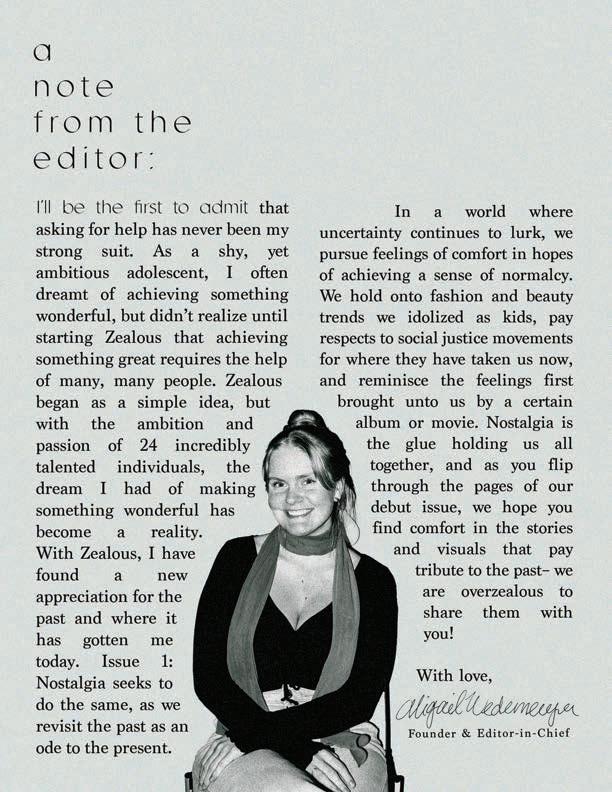
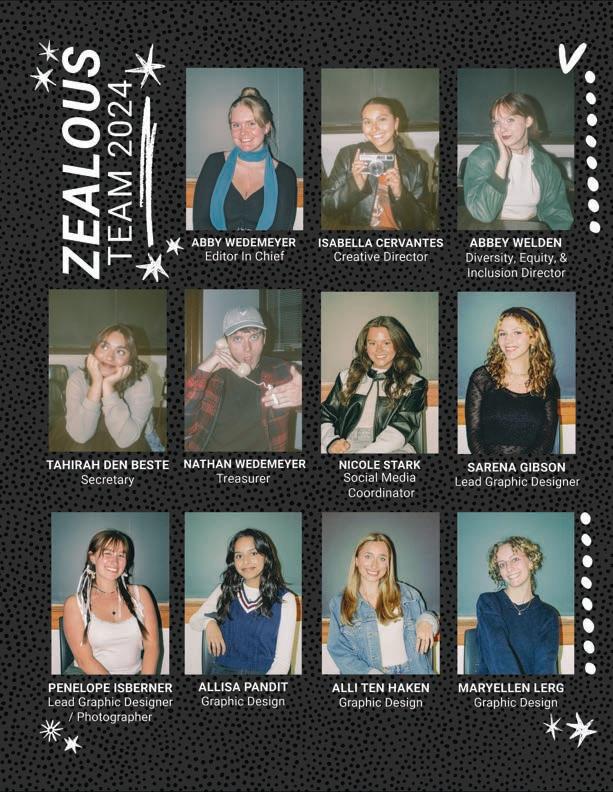
4

5

Today, time seems to move faster than ever, making something undeniably captivating about the past. It is a place we visit in our memories, a sanctuary for our younger selves to reside– ever vibrant and alive. For many of us in Generation Z, childhood evokes fleeting visions of rainbow parachutes billowing against the sky during recess, the sheer excitement of being granted permission to host a sleepover with friends, the feeling of returning indoors after a day spent outside, or even the distinct taste of a particular rubber Polly Pocket dress accidentally finding its way into our mouths during imaginative play. Each memory is a cherished treasure, a fragment of a bygone era that continues to shape who we are today.
As many of us grew up in the early 2000s, the decade holds a special place in our hearts. We share a particular affinity for the tangible, the nostalgic. In a world inundated with digital marvels, we find ourselves yearning for the simplicity of yesteryear. It is why we are bringing back the digital camera, dusting off record players, and cherishing the nostalgic charm of Polaroids. These artifacts of our past not only serve as reminders of where we have been, but also as guideposts for where we are headed.
6
As we reminisce about the toys that once filled our days with laughter and wonder, we begin to see reflections of our present selves in the innocent joys of our youth. Our childhood interests and passions have a remarkable way of shaping the adults we have become.
The child who spent hours lost in the enchanting world of dress-up, crafting elaborate personas and stories, might now find themselves seeking joy spending extra time piecing together an outfit in the mornings. Similarly, the child who eagerly wrote plays and staged performances for captive audiences of family and friends might now pursue a career in screenwriting or directing. Our younger selves serve as architects of our present identities, leaving an indelible imprint on the paths we choose to follow and the passions we pursue. What may have begun as innocent childhood pastimes have blossomed into defining aspects of who we are today, guiding us toward fulfilling lives enriched by creativity, imagination, and self-discovery.
In the age of social media, we often seek comfort in shared nostalgia. Videos like the “She Lives Inside of Me” trend on TikTok encourage us to reconnect with our younger selves, embracing their qualities with empathy and kindness. The theme of ‘girlhood’ gained prominence in the summer of 2023 following the release of Barbie (2023), prompting women to reflect on their childhood experiences and relationships with other women. Another online trend involved those hungry for nostalgia putting childhood photos of themselves on their bathroom or bedroom mirrors. The practice serves as a daily reminder to use positive self-talk, and to care for yourself as one would for the child in the photo. It is a tribute to our younger selves, who once viewed the world with wonder and innocence, urging us to approach ourselves and our lives with gentleness and compassion.
Looking back, we can’t help but envy the carefree nature once held in our youth. Untainted by the harsh realities of adulthood, we look back to a time where we roamed freely, unburdened by the weight of judgment or expectation. Our view of the world was bright and hopeful, filled with endless possibilities and boundless energy. It is a trait we often long to reclaim, a reminder of the innocence we left behind as we ventured into the complexities of grown-up life.
But amidst the longing for days gone by, there is a deeper realization that accompanies the nostalgia. We yearn for the simplicity of childhood not just because of the joy it brought, but also because of the freedom from responsibility it afforded. In the carefree days of youth, the worries of bills, careers, and relationships were but distant whispers on the horizon. It is a sentiment echoed in the wistful sighs of adults everywhere grappling with the relentless march of time.
Yet, as we mourn the passage of our youth, we find solace in the relics of our childhood that continue to shape our lives. The toys we once played with serve as portals to a life we cannot reclaim, but one we yearn to feel again. Each nostalgic artifact holds within it a piece of our story, a fragment of the magic that once filled our days with wonder and delight.
In celebrating the innocence, wonder, and boundless imagination of our youth, we honor not just the memories of the past, but also the spirit that continues to guide us forward. As we navigate the complexities of adulthood, may we never lose sight of the magic that once filled our days. As we journey onward, may we always remember that, no matter how much we may change, a part of us will forever remain untouched — a testament to the enduring power of the child that still lives inside of you.


7
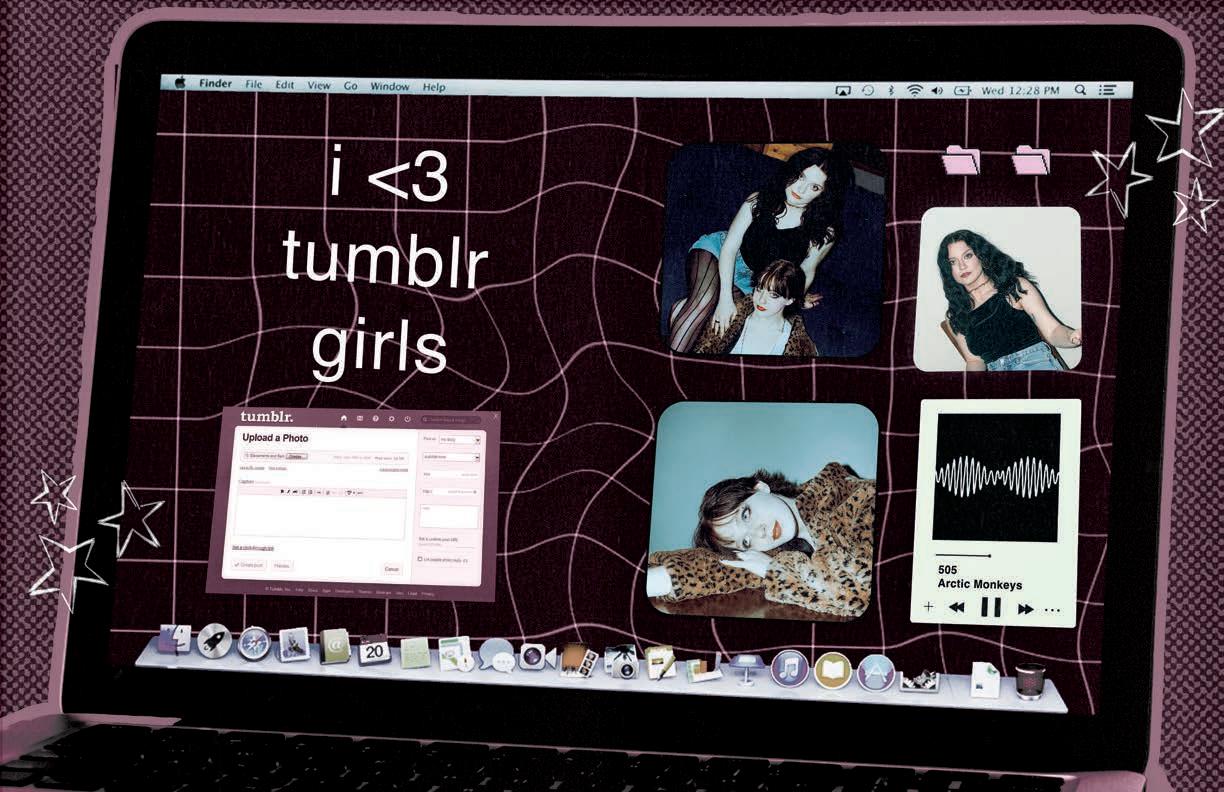

 By: Savannah Harris
By: Savannah Harris



Social media connects us to new ideas, cultures, and people at the touch of a finger. Like the rest of the world, it has evolved and shifted. In 2003, MySpace took the world by storm as one of the first social networking sites, and by 2004, it had over one million active users. In 2019, over half the world was active on social media as a whole. In today’s ever-changing world one might wonder how social media has remained consistent in our lives. That is, what motivates us to keep signing up for new platforms while checking in on old ones?
MySpace started as a platform that allowed users to share life updates and song recommendations. While its direct impact on myself and other members of Generation Z is slim, we can thank the platform for paving the way for social media today. Soon after, MySpace was surpassed by Facebook– the app we now know as the platform our parents and grandparents continue to use religiously. Like MySpace, its mark on Gen Z is small– I did not make an account until last year, and did so only to find my college roommate.
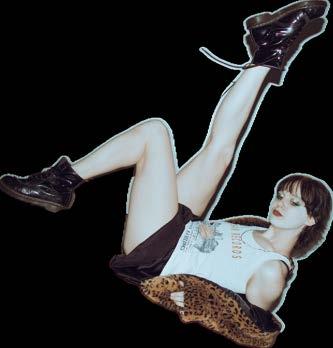
Source: Ortiz-Ospina, Esteban. “The Rise of Social Media.” Our World in Data, September 18, 2019. https://ourworldindata.org/rise-of-social-media.

10
In 2005, Reddit joined the social media world. Users could upvote and downvote links, opinions, and stories, invoking an emotional connection within the app. Now, we use the app mainly for entertainment, scrolling through “Am I the Asshole?” threads with our friends for hours. Later, Twitter famously taught its users the gift of conciseness and despite the platform’s recent change to X, we refuse to let go of ‘the bird app.’
Tumblr came along in 2007, launching a platform that allowed users their own microblogs—a space entirely their own. In 2014, the social media platform became a pop culture movement, paving the way for social aesthetics and the power of online influence, as seen by the ‘Tumblr Girls’ trend. Similar to Tumblr, Pinterest also held the purpose for the cultivation of aesthetics; it will forever be the platform we go to for inspiration. My own boards span back at least a decade–a memoir of my changes in aesthetics.
Meanwhile, Instagram is Gen Z’s personal private investigator and Snapchat sparked a not-so-good in hindsight era of filters, but has now transitioned to our main form of communication– we still haven’t settled the debate of when we should let that go. Vine rose to fame just as quickly as it fell from it. The app featured ultra short videos that are still referenced on the internet today. The app paved the way for our current social media climate, an era of short attention spans and an endlessly long list of online references. And today, TikTok has become known as the app that changed the world forever.
Today, social media is a mode of influence. It affects people’s thoughts, actions, and influences how they spend their money and view themselves. Often, this power of influence is seen in a negative light. However, social media— no matter its form— has an infinite power of bringing about a sense of nostalgia. Whether this means scrolling through years worth of old posts on Instagram or watching a “POV: You Were Born in the Early 2000s” TikTok, social media can remind us of every era of our lives. The good and the bad surface to our subconscious in every post, tweet, and video; personal connection is present everywhere. Whether it is resurfacing ten-year-old screenshots of celebrity tweets, stumbling upon the 2014 Tumblr account you made and soon after forgot about, or seeing your mom’s #throwbackthursday post, social media touches every part of our lives. I made my first social media account in fifth grade on Instagram, which took a hand-written essay for my parents to agree to. I, like so many others, have lived through the beauty guru side of YouTube and the endless TikTok dance trends. My social media accounts have seen their active and inactive days, and even so, they remind me of every corner of my life. Nostalgia is the thread that continues to connect every new platform and keeps users coming back for more content.

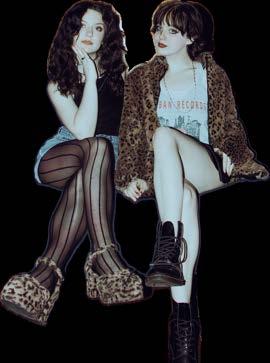
11

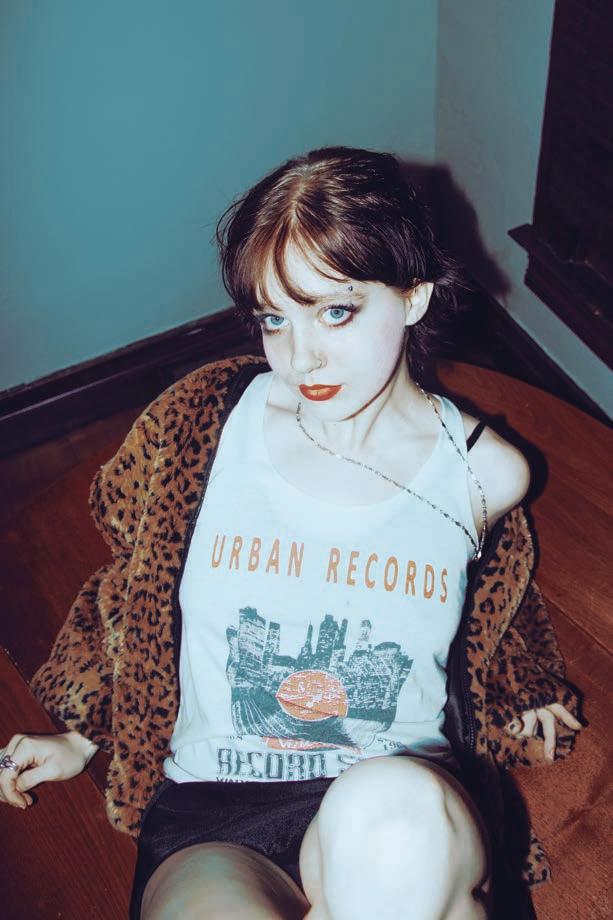


people oF iC

Zealous has a fierce passion for fashion and creativity, so what better way to keep a pulse on trends than to interview students at the University of Iowa about their style? Photographer Lilly Stence and writer Julia Adomaitis introduce “People of Iowa City,” where they take on the campus streets and interview those whose sense of style quickly catches the eyes of those around them.
SAM (She/They)
This is Sam! When asked how she found her style, Sam expressed her profound interest in the art of thrifting. Her tactic for creating an outfit from the thrift store? – choosing the “ugliest clothes, putting it all together and praying it looks good.”
Sam’s unique approach to shopping secondhand has enabled her to draw inspiration from numerous Pinterest boards, allowing her to craft cohesive styles that resonate with her aesthetic. Each of these factors has helped her flourish and discover a style that is unique to her!
TAYJAH (She/Her)
Meet Tayjah! With the intention of moving away from trends, Tayjah discovered her style by simply observing others’ and adapting their most captivating elements into her own wardrobe. Additionally, she shared her interest in the bohemian aesthetic, influenced by TikTok.
“I’ve been on the hippy-dippy side of TikTok, so I love crochet and anything boho– stuff like that.”
Tayjah’s preferred way of shopping is just trading clothes between friends, but her favorite place to shop in Iowa City is Crowded Closet, where she enjoys browsing second-hand items.
eMANUel (He/Him)
Emanuel is a student here at the University of Iowa majoring in graphic design and screenwriting. His dream is to move to Los Angeles and write some super cool shows. He loves the vibes of Iowa City and finds it way different from his hometown of Chicago.
14
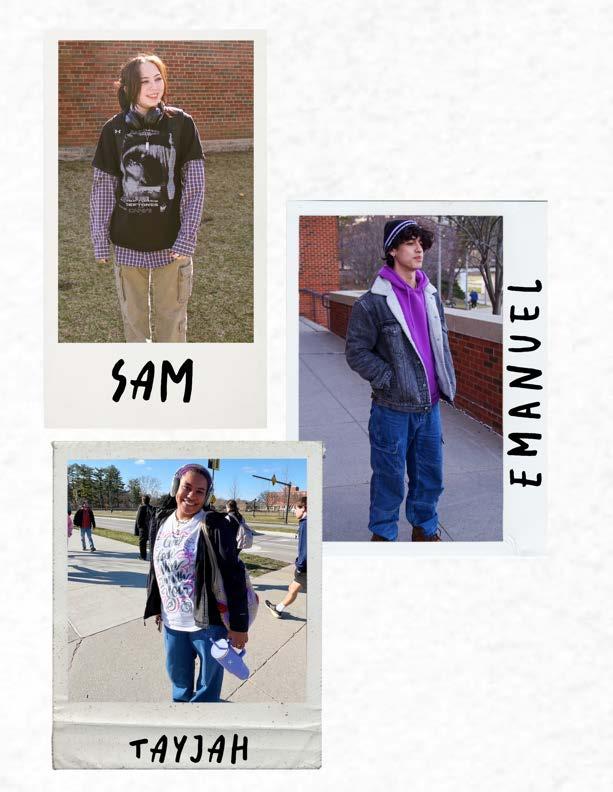
15
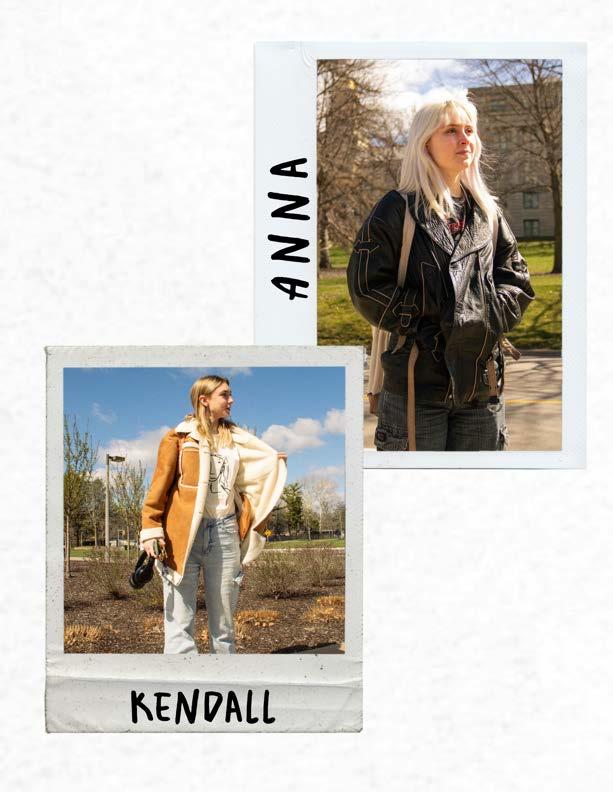
16

KENDAll (She/Her)
Say hello to Kendall! Kendall is all about ’90s fashion. Her freshman year at Iowa is when she truly started to blossom into her personal style. Upon joining the student organization SCOPE, she was captivated by other members’ cool and unique senses of style, which motivated her to cultivate her own! Kendall loves to pull inspiration from her mother’s ’90s wardrobe and incorporate those pieces into her style today.
Not only does she take inspiration during a time when double denim and kitten heels were all the craze, but she also pulls from the dark academia aesthetic.
“I’m big into dark academia, kind of Oxford-looking pieces. I thrifted this coat– it kind of makes me feel like I’m walking through London.”
As for stores she frequents in Iowa City, Kendall loves Ragstock, a true treasure of Iowa City and a place full of unique new and vintage pieces for affordable prices!
ANNA (She/her)
This retro rockstar is Anna! Anna pondered for a moment after being asked when she found her style.
“That’s a hard question. I don’t know, I feel like it keeps evolving. But I feel like maybe high school? You find things you like and try to emulate that,” Anna said.
Wearing one of her dad’s old band tees, Anna shares that she takes fashion inspiration from her parents and tries to incorporate pieces from the ’80s and ’90s into her everyday attire– styles she keeps an eye out for when shopping at thrift stores.
Anna admits candidly that she doesn’t often clothing shop in Iowa City, but fondly shares where she gets her jewelry fix– antique store Artifacts.
“It’s so good! And reasonably priced,” Anna said about the resale store. Artifacts certainly holds a place in many students’ hearts here in Iowa City.


17
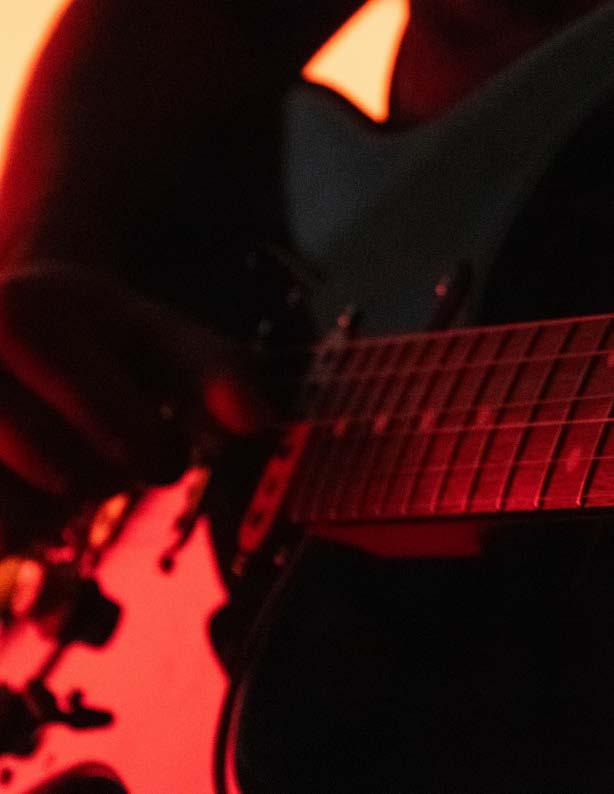
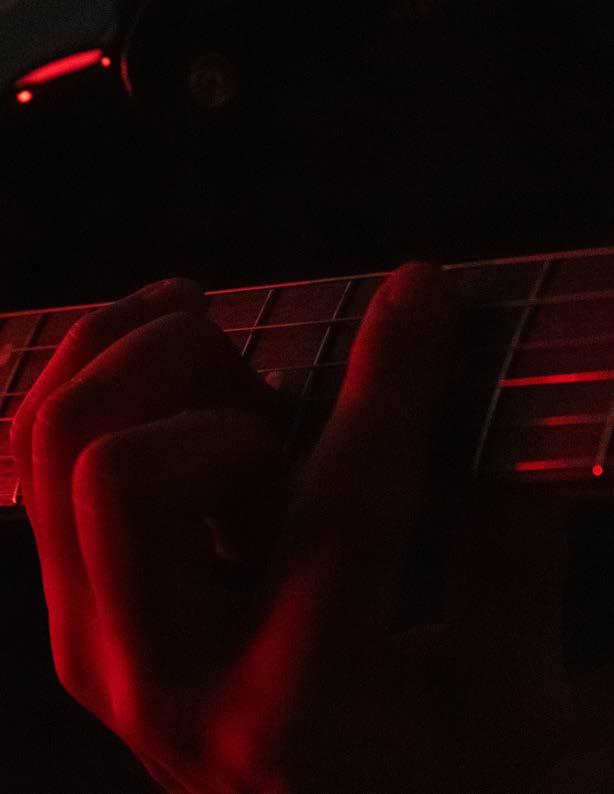

“Me and Nick kind of knew each other, we had a class together years before. So he heard that I played the guitar, I don't know how, but he texted me and asked if I wanted to get together,” Reed says. For a while, the duo kept their eyes peeled for a drummer. Bell, being “the only drummer around,” as Reed describes, began playing with them in October 2021.
Excited to be breaking into the ever-growing Iowa City music be breaking into Iowa scene, Dirty Blonde re fl ects on the welcoming and communal environment they ’ ve experienced, and how other local acts have inspired them.
“There's lots of little things lots little things going on- there are lots of mini festivals and house shows, you know. Lots of great opportunities for us to meet people,” Reed says. Their fi rst gig in Iowa City resulted in the band making three new friends, and later gigs resulted in more new relationships. “It ’ s like a whole chain reaction,” Reed describes.
Between the three bandmates, Dirty Blonde has developed a bit of a post-punk, jazz-adjacent sound, with several guitar riffs and bass lines resembling reggae rock and early ska. The ensemble ’ s musical roots, however, come from somewhere a little closer to home.
20

Reed recounts growing up listening to The Black Keys and the signi fi cance the band had in his early guitar playing.
“I was really obsessed with The Black Keys- all of their earlier stuff, the fi rst four albums. That's what I was learning on the guitar, and I was just absolutely obsessed with it. I would stay up late and watch their live shows on YouTube and cry and stuff because it was so inspiring for me” Reed said.
Jackson paints a different picture of his early musical experiences, naming Steely Jackson paints picture of early musical experiences, naming Steely Dan as an initial in fl uence.
“I learned a few different Steely Dan songs and that kind of inspired making jazzier progression,” Jackson says. “More recently, I feel like I've been very in fl uenced by more traditional jazz players, even horn players.”
Both Reed and Jackson expressed an interest in music from a young age, saying Both Reed Jackson expressed an in music a young saying their childhood selves would have been pleasantly surprised to see where they are now.
“I think mostly I would just be happy that I ended up playing music in a band. It's been a long term dream of mine, even when I was a little kid, doing piano lessons…I never wanted to play by the books or anything,” Reed recalls.
“Yeah, yeah. We had a garage band right next door- our next door neighbor ’ s sons had garage band door- our next s had a band. We'd always hear him practicing, when I was really young, and I was like, oh, God, I just want to be like that, you know? So I agree with that. I'm just glad we're playing music in general,” says Jackson.
Today, the band says they ’ ve been told they sound a bit like The Police, which can the band says they ’ ve been told Police, which can be heard throughout the rhythm sections of a few of Dirty Blonde ’ s songs, and in some of Jackson ’ s vocals. Though the band does cite the English group as a major inspiration, they made a point to mention a desire to be known outside of these comparisons.
“It's always meant as a compliment, but as a musician, when you're compared to always meant as as musician, you're someone else, it hurts, a little bit… I'm honored to be even mentioned in the same sentences as those guys, but we have a wide, wide variety of in fl uences,” Jackson says.
The group is grateful to be where they ’ re at and excited to see what the future holds, mentioning that they ’ re always working on new things and have a few gigs on the horizon.
21
13 Things to KnowAbout Dating in Your 20s
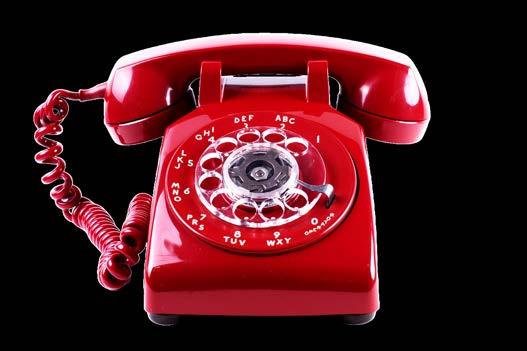 By Carson Hartzog
By Carson Hartzog
So, you’re in your 20s and wondering what it means to be in a healthy relationship. Chances are, you're looking for one, or you’re already in a relationship and seeking some kind of validation to show that it’s a healthy one. In the case of the latter, there might be some personal growth you need to work through, but that’s for another person to tell you about.
In case you don’t know this by now, not everyone can be trusted to give you healthy information. But think of me as the big sister you never had, or the one you need but have always been too shy to ask for. Here’s everything I know about relationships as a 22-year-old woman:
Remember, every relationship is unique, and what works for one couple may not work for another. Trust your instincts and prioritize your own well-being in any romantic partnership.
22
1 22
1
As a general rule, if you have to convince anyone they’re a good partner, they’re probably not. I know this is hard to hear– I was once a girl begging everyone in her life to see the good in someone bad– but the people around you usually know best. Trust that they have your best interests at heart and would only intervene when necessary.
3
Communication: Open and honest communication is key. Partners feel comfortable expressing their thoughts, feelings, and concerns without fear of judgment or reprisal.
2
Mutual Respect: Both partners value and respect each other's opinions, boundaries, and feelings without the need for persuasion or convincing.
4 5
7
Supportive Dynamics: Partners support each other's personal growth and individual pursuits without feeling threatened or insecure.
Supportive Dynamics: Partners support each other's personal growth and individual pursuits without feeling threatened or insecure.
Healthy Boundaries: partners respect each other's boundaries and are mindful of each other's needs for space and autonomy.
Shared Values and Goals: Partners share similar values, goals, and visions for the future, which strengthens their bond and fosters mutual growth.
Trust: Trust is foundational. Both partners trust each other implicitly and feel secure in the relationship.
6
Equality: The relationship is based on equality and mutual give-and-take. Neither partner feels superior or inferior to the other.
Independence and Interdependence: While each partner maintains their individuality and independence, they also recognize the importance of
8 9 11 13
Emotional Safety: emotionally safe and secure in the relationship, knowing they can be themselves without fear of rejection or criticism.

23

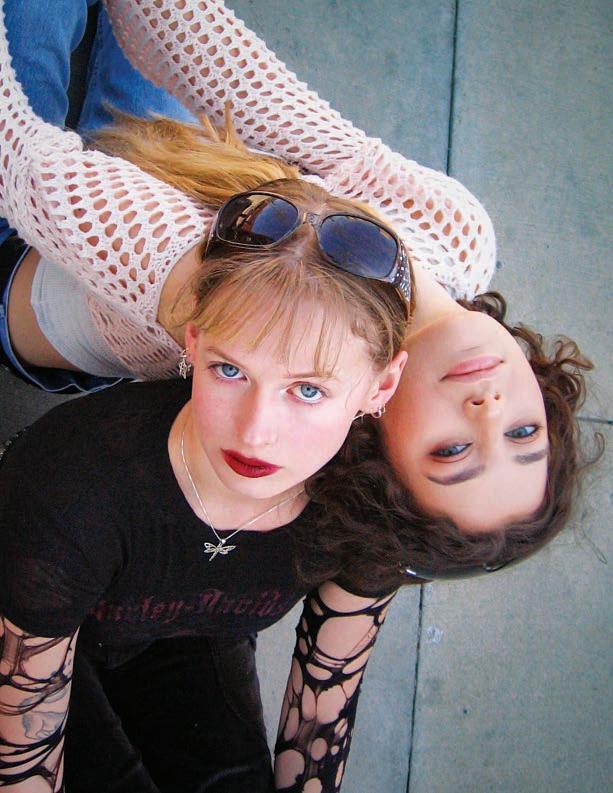

26
By: Aspen Suthers

It is abundantly clear that the love for nostalgia is sweeping across many hobbies from fashion to music, with photography being no exception. Though film and digital cameras seem to have fallen out of style with the rise of smartphone technology, members of Gen Z are rediscovering the joy of capturing photos through these older mediums. Polaroids, disposables, and old digital cameras are rapidly finding their way back from hibernation and into our Instagram feeds. Even smartphone apps like Huji Cam have emerged, in which users can mimic the look of film photos using filters and other effects, allowing for the vintage look to become accessible to anyone. Despite rapid advancements since the age of film and digital cameras in the 1990s and 2000s, plenty of younger people are opting for these older forms, although flawless photos are just taps away on a smartphone. You might be wondering why these older forms of photography have so suddenly reemerged as a social media trend after seeming to fall off the face of the earth. Why are we beginning to favor these older forms again? The answer may lie in a desire to reminisce on the past.
As someone a part of Gen Z, most of my early childhood photos were snapped by my parents on a digital camera. My mother spent hours putting together scrapbooks full of such photos, and whenever I return home now, I enjoy flipping through the glossy pages of my younger self smiling at the camera. The majority of my early years were printed and displayed on these pages. The photos are simple, happy, and comforting to look at—when I see them, I am put at ease. In each of these instances, I am overwhelmed with a love for simpler times. Those with similar experiences also now try to recreate these carefree moments, satisfying a craving for nostalgia through older photography.
As social media becomes more prominent, Gen Z is searching for more authenticity in their online interactions. Smartphones are becoming increasingly dominant in our everyday lives and with it, the availability of advanced editing techniques and filter enhancements. Simpler forms of photography present themselves as an escape from an overwhelming social landscape. Digital and film photography promotes minimal editing, whereas social media normalizes excessive filters and touch-ups. Simple, grainy photos from older cameras remind us of times when we did not feel the need to make these edits. The technical imperfections in older photos, especially from unreliable disposable cameras, add more character to the shots. It can be quite difficult to take a bad photo on a smartphone, as the advanced technology corrects mistakes instantaneously, giving the smartphone photos a superficial feel. Digital and film photography, instead, compels us to put more care into shots and more thoroughly choose the moments we capture.
What is most intriguing about this phenomenon, is that many people of Gen Z have little experience with these older cameras besides examining old photo albums. So what sparks this curiosity when better technology is right at our fingertips? Film and digital cameras can be finicky and unreliable, with limited features and the possibility that your photos will not turn out as expected. Still, there is a sort of magic in the process that cannot be mimicked by smartphone photography. Film cameras, for example, pressure the photographer to make the most out of the limited shots in the reel, resulting in the memories attached to the photos being more special than hundreds taken on a smartphone.
27

I asked friends who use film and digital cameras what they liked about their experiences. My friend Kyra answered.
“I don’t look back at them [the photos] as often [as smartphone photos] so it’s more special,” she told me. “I love being able to hang it up and stare at a moment.”
Another friend, Samar, added, “When I’m taking film, I feel the pressure of capturing the perfect moment... the photos that you’re taking are more intentional. You have to think about the amount of money you’re spending on the film... I love the fact that it has to go through this physical process.”
Interested in trying out the vintage photography trend for yourself? Though film and digital photography require more investment than simply relying on smartphone photography, it is a great way to explore photography as a hobby. Disposable cameras, such as simple plastic Fuji Film and Kodak models, are widely available across retailers and can be easily developed at drugstores. I have used disposable cameras for a few years now, buying them in two-packs from CVS, and then taking them back to develop after a vacation or special memory. It is exciting to send these photos off, anticipating the surprise of how they might turn out and awaiting their physical copies to decorate my walls. Additionally, digital cameras can be found for fair prices on second-hand websites like eBay. I purchased a digital camera off the website earlier this year—a used Canon PowerShot A520. Though the model is from 2005, it is in great condition and is easy to use with a wide range of features to capture my favorite moments. I am more selective with what I take photos of on this camera than on my phone, which allows me to be present in the moment and brings a great sense of nostalgia. As someone who does not yet have much experience in professional photography, using disposable cameras and my PowerShot is great for having some fun with the hobby. Investing in an older camera is worth the sentimentality it brings— there is nothing like bringing back good feelings from the past. We find comfort in simplicity, and this trend is the perfect opportunity to capture it.
28


Strikes, streaming services, and a sweeping pandemic–each can be attributed to the adversity of the film industry in the early 2020s. A record low viewership for the Academy Awards in 2021 and sharp declines in movie theater attendance made a cinema rebound hard to imagine. However, many instances from 2023 proved that the fight to keep cinema alive is far from over, and Hollywood just might be entering its new Golden Age.
Despite living in a lockdown-free era, uncertainty and chaos remain today. Like all art, cinema has always played a crucial role in allowing people to escape that chaos. Theaters and movies provide an outlet where individuals can detach from their daily worries and immerse themselves in enthralling narratives, transporting them to different realities for a few hours. That need for escapism was threatened during the second-longest Writer’s Guild of America strike1 in 2023. Productions delayed2 for heavily anticipated films such as Dune 2 and TV series like HBO’s Euphoria, and hope was low for such productions to see the light. However, after nearly five months, the Writer’s Guild prevailed and the strike ended in September 2023. The morale of both screenwriters and cinemagoers was boosted as film and TV releases were rescheduled. Luckily, two major blockbusters were not impacted by the writer’s strike and were set to release on July 21, 2023– and it is safe to say cinema wouldn’t have been the same without them.
Undoubtedly, the summer of Barbenheimer excited us all to get back into the movie theaters. Due to both films being set to release on the same day, Barbie and Oppenheimer quickly gained traction on social media for their seemingly opposite audience demographics. Although rivalries started between the two fanbases, the prestige of both Barbie’s director Greta Gerwig and Oppenheimer’s Christopher Nolan garnered enough attention and excitement that many moviegoers opted to watch both films back-to-back.
Countless media outlets delved into the Barbenheimer phenomenon and it was nearly impossible to scroll through social media without seeing a post related to either of the movies. Variety conducted a discussion between Margot Robbie and Cillian Murphy– both of the films’ leading stars– as an installment of their “Actors on Actors” YouTube series. During the conversation, Robbie, who also served as a producer on Barbie, told Murphy that the marketing team had nothing to do with the high amount of social media content. “The world is doing this,” said Robbie.
So does this mean social media is the best new marketing tool for movies? The rising popularity of the film review website Letterboxd might prove it to be. Letterboxd’s website describes the platform as “Goodreads for movies,” where users can rate and review films, follow friends and other reviewers, and keep track of their favorite movies. With users ranging from casual moviegoers to cinephiles, Letterboxd provides a social outlet for people to express their film thoughts to a wide audience. According to The Washington Post3, at the start of the pandemic in March 2020, Letterboxd was home to 1.8 million users and by the end of 2021, the platform grew to have 4.1 million users. Today, nearly 10 million amateur film reviewers use the site, with celebrities like The Bear’s Ayo Edebiri even partaking in the growing platform.
While cinema experienced a slowdown in the early 2020s, the resilience of screenwriters in overcoming challenges within Hollywood, coupled with society’s enduring desire for connection, paved the way for a promising future in film. Today, the demand for cinema is stronger than ever, and we stand ready to embrace it.
1Mallika Sen and Jennifer Farrar, “This Isn’t the First Time Hollywood’s Been on Strike. Here’s How Past Strikes Turned Out,” AP News, July 18, 2023, past-hollywood-strikes-62de005f62e38dd09b38cd591ea26123.https://apnews.com/article/ 2Sonaiya Kelley, “TV Shows and Movies Delayed by Strikes: Full List - Los Angeles Times,” Los Angeles Times, October 23, 2023, story/2023-09-19/tv-shows-movies-delayed-list-writers-strike-sag-aftra.https://www.latimes.com/entertainment-arts/business/ 3Goldstein, Jessica M. “On Beloved Letterboxd, the Internet Feels the Way It Used to Feel ...” The New York Times, December 18, 2023. https://www.washingtonpost.com/style/of- interest/2023/12/18/letterboxd-fans-movies/.
30

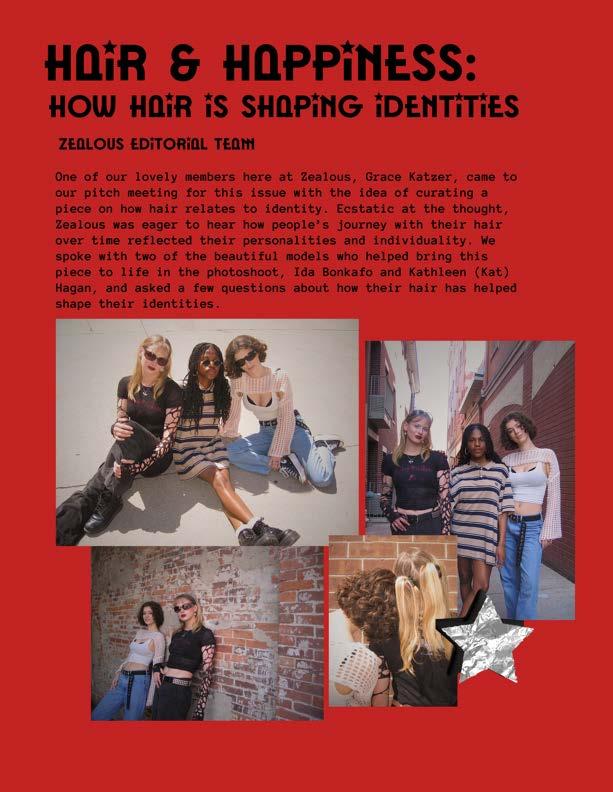
32

33
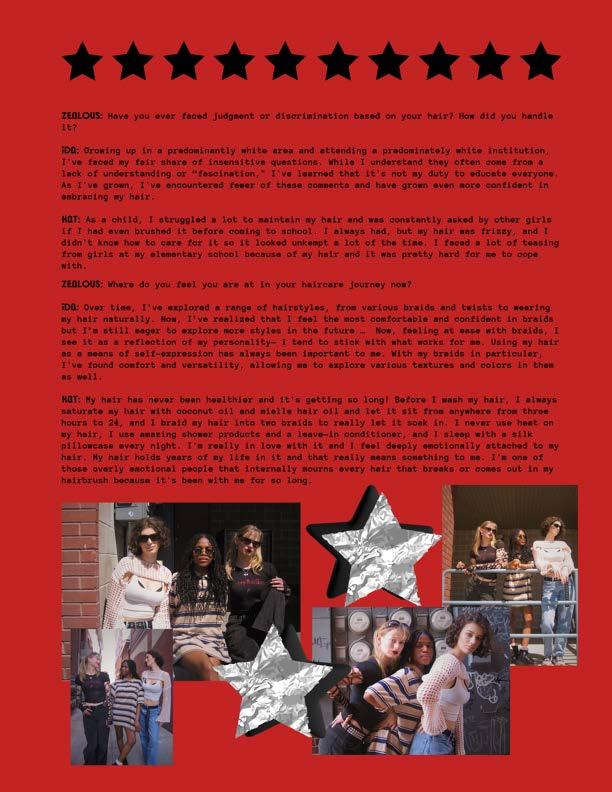
34



IOWA CITY’S IT-GIRL
IOWA CITY’S
TATTOO ARTIST
MIGHT ALSO BE YOUR NEW THERAPIST
MIGHT ALSO BE YOUR NEW THERAPIST
Abby Wedemeyer
Arieanna A’Lee’s Instagram profile, @inkbyaires, might initially intimidate you, as it did me. She follows exactly 666 accounts, garners hundreds of likes on her posts, and her grid is a mix of gothic, yet whimsical tattoos. Her work showcases linework so precise that I am sure Dave Navarro would volunteer himself as a canvas. Therefore, it did not necessarily come as a surprise when she told me she first began tattooing at age 15. However, what surprised me was her ethereality.
I had only gotten two tattoos before booking with A’Lee, a song lyric and a simple rectangle. I had managed to piss off the artist I booked with by mistakenly showing up an hour late to my appointment (understandable), and from there on out I was nervous to schedule another. That was until I couldn’t pass up the opportunity when A’Lee opened her bookings, which only happens about three times a year. She had tattooed a half dozen of my acquaintances and nearly every Iowa City indie girl I wanted to be. I emailed A’Lee and requested to receive a tattoo of the Roman goddess Venus, to which she responded enthusiastically: “I’d love to do this type of artwork!” Her excitement was enough to relieve me from my past tattoo trauma.


38

We had to cancel the appointment due to a family emergency she was having, for which she apologized profusely. Although I wasn’t concerned, she suggested a compromise: tattooing me at Middle of the Map, a well-known tattoo convention, that weekend.
We had been messaging the morning of the convention, planning a time that would work best for me to fit into her waitlist of clients. When 2 p.m. came, I shimmied my way through the crowd of artists tattooing body parts from bald heads to butts, and I arrived at Velvet Lotus Tattoo’s booth.
“Yes, yes!” A’Lee responded to me after telling her who I was. She apologized, telling me she could get me in at 4 p.m. after two more sessions that had been delayed. I did not mind, I had never been to a tattoo convention before (as if my dainty, straight-off-a-Pinterest-board tattoos did not give it away) and I figured I could walk around some more. Before I reentered the maze of tattoo booths, A’Lee grabbed her iPad and pulled up the drawing she had done of Venus. I had mentioned to her in my email that I wanted the portrait surrounded by flowers of her choosing, and the goddess was depicted accordingly. “I chose daffodils” she glanced at me for approval, “they symbolize rebirth.”
It is nearly one year after A’Lee smashed out the five-inch intricate portrait of the Venus on my right forearm in under an hour and a half. I meet her at Dark Cloud Tattoo, the shop she now works at in Iowa City. I pull up my sleeve to show her the tattoo and she gushes, “She’s so gorgeous!”
She pulls up a chair for me at her station and sits across from me. Only 23 years old, her cheeks are bouncy and covered in freckles. Her kiddish appearance contrasts the black-filled flowers and gothic fonts inked across her shoulders and chest. Her station is decked out in gemstones, skulls, and plants– objects often used in her artwork, which are also displayed. The delicacy of her drawings exhibits skill; something to be mastered over several years.


39
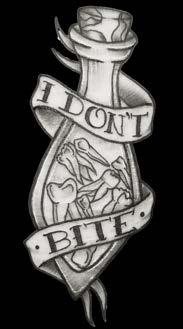
I am certainly not the first to appreciate A’Lee’s spookish, intricate art style. Emma Johnson, a 20-year-old living in Coralville, Iowa, has 21 tattoos, 19 of which are from A’Lee. Unlike some tattoo clients, A’Lee’s do not come with an ultra-specific tattoo in mind– they want something that emulates her distinct style.“It’s extremely flattering that people will hit me up and be like ‘I want you to do this, but I want you to do it how you want to do it,’” A’Lee tells me. Johnson has a pair of A’Lee’s hand-drawn fairies on her left arm– easy to catch the eye. “I’m, like, in love with her,” Johnson had told me. Recalling my experience getting tattooed by A’Lee, I know what Johnson means. It is not just A’Lee’s designs that keep clients coming back, it is her personality, too.
A’Lee describes her sessions as a “bonding moment” between her and her clients. “My grandma always told me I was a healing type of person,” she tells me, gripping her stool and gently swinging her legs. “Some people, they get super comfortable with me and they start to treat it like a therapy session instead of like just coming to see a stranger to get tattooed,” A’Lee says. “I definitely appreciate the trust people give with their bodies and their personal lives; their emotions.”

A few years back, in pursuit of incorporating her empathetic disposition into her career, A’Lee began studying psychology at Kirkwood Community College in Iowa City after moving from Mount Pleasant, Iowa. “I freaking hated it,” she laughs, “so I dropped that and got three jobs.”
A’Lee discloses to me that throughout elementary and high school she didn’t enjoy many of her classes other than art. “My mom always incorporated art into literally every aspect of my life,” she says, “She was a beautiful artist, so like, literally, with any kind of learning, like math, art, science, she would make it artistically pleasing so that I would be more engaged, because I was like, not good at other subjects,” she explains. It was at age 15 when she had her first experience tattooing someone. The father of one of A’Lee’s high school friends used to tattoo clients at his house and the friend had asked A’Lee to use the equipment to tattoo her. A’Lee was granted permission from the friend’s parents and she gave her a small tattoo. A’Lee tatted herself too– a simple peace sign on her ankle that she had used a quarter to trace. Later, another friend’s mom gifted A’Lee a tattoo gun from Amazon. A’Lee giggles and indicates the tool as a “super bad” machine to start tattooing with, but nonetheless, catapulted her career. After tattooing at home for five years and leaving Kirkwood, a friend who was working at Velvet Lotus Tattoo in Iowa City told A’Lee she should consider working as a professional tattoo artist. So, while being tattooed at Velvet Lotus, A’Lee was simultaneously interviewed for an apprenticeship. The artist, also the owner of the shop, said she wasn’t looking for an apprentice at the moment, but she needed a receptionist. A’Lee worked for a couple of months at the front desk and later became an apprentice, which she jokingly refers to as becoming “the shop’s bitch.” After one year, $3,000, and a great deal of grunt work, A’Lee became a professional tattoo artist–a career that provided A’Lee with a new approach to healing herself and others.
40
A’Lee’s bubbly demeanor becomes solemn when she tells me she battles with social anxiety. Consistency is her key to being a great tattoo artist, but “being super consistent all the time even though your mental health isn’t consistent all the time… that’s really hard,” she tells me. A chronic people-pleaser, she finds it hard to let people down. I recall when I first met up with A’Lee at Middle of the Map and the numerous apologies she gave me for rescheduling the appointment. However, it is not just trying to honor clients’ appointments that discourage her.
“I know so many tattoo artists and I can immediately think of anybody better than me,” A’Lee reveals to me. “[Doing] some tattoos that intimidate me, that just kicks off my anxiety.” She states that everybody has their insecurities, especially artists, as they often compare their work to that of others.
She recalls the time she did her first large realistic tattoo, a portrait of Mac Miller. “I don’t know how I did that, but I’d love to do it again,” she says.
“As a tattoo artist, there’s never a capacity in which you stop learning. It’s such a blossoming field of work, because there’s always new stuff coming up, always new techniques to learn, so literally you cannot stop learning.” I can see she has gained more self-assurance when she tells me “ I know you shouldn’t work to please people, but I think that would be more pleasing or more impressive to have those skills down and to be able to offer those skills as a consistent service.”
We talk for a while longer, and I tell her I find it inspirational when people can switch from their comfort zones and work towards something new– that it is impressive when they trust themselves to expand. I disclose to her that it is something I am working on doing.
“And that’s growth,” she assures me.




41

“We’re alive in ‘85,” a poster reads in a picture of a 1985 pride parade.1
A library exhibition early last year pulled various photographs and magazines out of the University of Iowa’s archive to spotlight Queer history in Iowa City. These pictures contextualize the Queer community’s long history of finding unity in the face of adversity, and pride despite societal condemnations. The LGBTQ+ community has been carving out space for themselves in Iowa City since the 1960s, continually advocating for the acceptance, protection, and celebration of Queer students across the campus and city.
Fourteen years before homosexuality would be decriminalized in Iowa, Queer students in Iowa City were finding each other, despite the fear of being outed. In 1964, The Daily Iowan ran an ad for Kenny’s, a local bar, which simply read, “Dry?” While this wouldn’t have made sense to any straight students at the time, and certainly not to the editors of The Daily Iowan, many Queer readers knew what this meant: Kenny’s was a bar that served as a secret space for Queer people to gather. These ads were proof to Queer students that there was a community to be found in Iowa City, albeit one confined to shadows and secret ads.2 While simultaneously running ads for a psychiatric hospital that offered “treatment” for any men with homosexual tendencies, The Daily Iowan was also unknowingly helping Queer students find each other on campus.
Despite the prejudices of the 1970s and the many decades to come, the LGBTQ+ community was slowly laying roots in Iowa City. These roots would result in the Gay Liberation Front forming in the fall semester of 1970. In the era of retaliation, the GLF held their first protest during the homecoming parade that year, with their float displaying the slogan, “Gay pride is gay power.”2
In audio archives from a University collection, one protestor tells an interviewer that the participants were afraid of being beaten up after the parade. There was still a palpable climate of fear for LGBTQ+ students on campus, but the GLF increased the visibility of Queer struggles. This was how the GLF became the first LGBTQ+ student organization recognized at the University of Iowa and one of the first in the nation. Soon after, The Daily Iowan published a five-piece article on the GLF that followed a reporter attending a gay social event with a subtitle reading, “Gay liberation movement is here to stay.”2
Alongside the GLF, the Second Wave Feminist Movement was budding in Iowa City, welcoming a new kind of visibility and community for women, straight and Queer alike. Lesbians at this time did not receive the same advocacy on campus that gay men did through the GLF, so they created a community off campus in the larger Iowa City area. Their impact spread through the Midwest and their first Feminist publication, Ain’t I a Woman, was printed in June 1970 in Iowa City, amassing nationwide popularity.2 This magazine gave voice and autonomy to women across the Midwest to engage in feminist and lesbian thought. The Iowa City Women’s Liberation Front would soon give birth to the Iowa City Women’s Press where they had full control over their content without fear of censorship, mirroring the University of Iowa’s long legacy of using magazines to give voices to locals and students. This level of local organizing ushered in a sense of regionality and resulted in the first Midwest Gay Pride Conference in 1974, held in the Iowa Memorial Union.
42

These conferences helped establish a larger LGBTQ+ community that encompassed both gay men and lesbians. Alongside this, the 1980s brought a shift in focus from protests to community organizations as inclusion and communal support became a cornerstone within Queer community. The GLF movement became the Gay People’s Union to include more identities and offered support groups and social services. Their primary service in the 1980s was Gayline, a hotline that provided information about the organization, coming out, and safe sex education.2 With the Aids Crisis beginning in 1981, these resources became a literal lifeline to many students. While the Iowa City government and University failed to protect and support their students and citizens properly, the larger gay community of Iowa City opened its doors to all, proving once again, that gay pride is gay power.
In 1982, the first course covering Gay history was accepted into the University of Iowa’s School of Sociology curriculum. The course studied the history of the Gay Liberation Front in Iowa City, which had been the group to advocate for the class’s addition. In 1993, the University of Iowa proposed a historic policy, offering benefits and healthcare to unmarried same-sex partners. This policy was enacted 16 years before gay marriage would be constitutionalized by the Iowa Supreme Court and 22 years before gay marriage was constitutionalized across all of America.2 Through the late 1990s and the early 2000s, the Gay People’s Union underwent several name changes, each encompassing a broader group of LGBTQ+ people. Alongside the Gay People’s Union’s evolution, many other Queer campus organizations were founded. In 2006, after almost a decade of student campaigns3, the Lesbian Gay Bisexual and Transgender resource center, now known as the Pride Alliance Center, opened on campus.
43

In 2024, the Pride Alliance Center remains an integral space for Queer communities across campus. In its mission statement, the center seeks to provide a safe space, or a “home away from home,” to all students. Diego Rodriguez, the coordinator for the Pride Alliance Center, said that it gives students a space on campus for belonging and autonomy. The space was created by students for students, and the staff honors that legacy by tailoring the house– down to the furniture– around student feedback. The center carries through the mission of many organizations before it, by providing students with the resources they need to feel at home on campus. Not only does it give Queer student organizations a space to use for their meetings, events, and programs, but the center also provides individual students with simple amenities like laundry, printing, and even a place to take a nap. The staff seeks to foster both a communal and an individual sense of belonging on campus. Rodriguez emphasized the importance of student ownership saying, “Everything we do is catered to [the students’] needs, and by doing that you allow them to take ownership of the space.”
While the experience for Queer students on campus has vastly improved in recent decades, Diego Rodriguez has witnessed the impact of Iowa’s recent anti-LGBTQ+ legislation on students. Rodriguez describes the center as a place that “provides an opportunity for [students] to have free dialogue,” which is increasingly important amidst a climate of book bans and censorship. According to Rodriguez, students are expressing more and more fear about marginalization and erasure on campus. He admits, “Because of all the restrictions and limitations that we have, it is very hard to keep a healthy environment and to help students not be discouraged by what’s going on.” This sentiment is exactly why spaces like Pride Alliance Center are vital parts of the university and must be protected. Rodriguez also highlights that through the center’s outreach to students, staff members can directly update the University on Queer student’s needs, feelings, and at times, their fears.
Despite transphobic and homophobic legislation, gay liberation is here to stay. The Pride Alliance Center is proof of Queer existence and belonging on campus. The center is also a living testament to decades of the Queer community fighting for the right to space and pride in Iowa City.
1Hoberg, Madde. “Out and About: Queer Life in Iowa.” Out & About: Queer Life in Iowa City - Main Library Gallery - University of Iowa Libraries, 2023. https://www.lib.uiowa.edu/gallery/ exhibit/outandabout/.
2McCartney, David, and Aiden Bettine. “LGBTQ+ History at Iowa.” YouTube, April 14, 2022. https://www.youtube.com/watch?v=UycPvZYuqLI&t=2823s.
3Berget, Brittney. “After 10 Years, Center Opens.” The Daily Iowan. October 30, 2006.
44



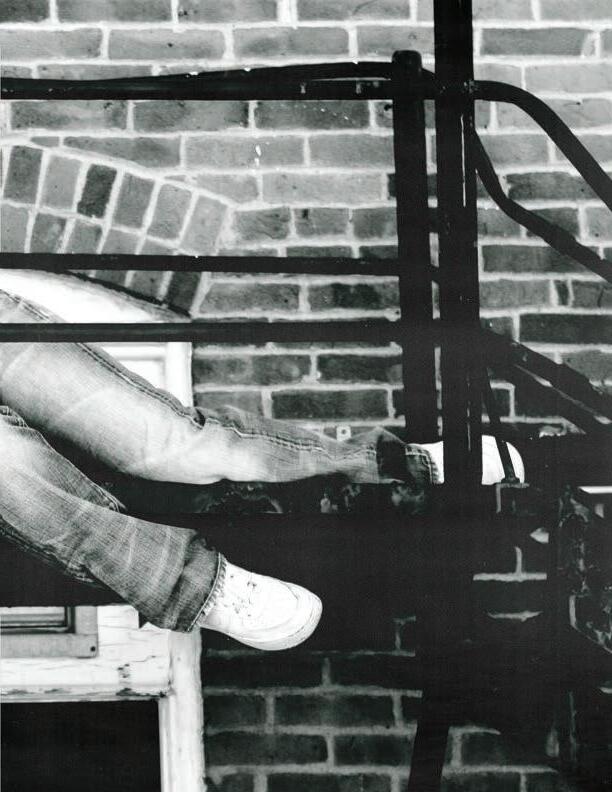










 By: Savannah Harris
By: Savannah Harris




















 By Carson Hartzog
By Carson Hartzog































